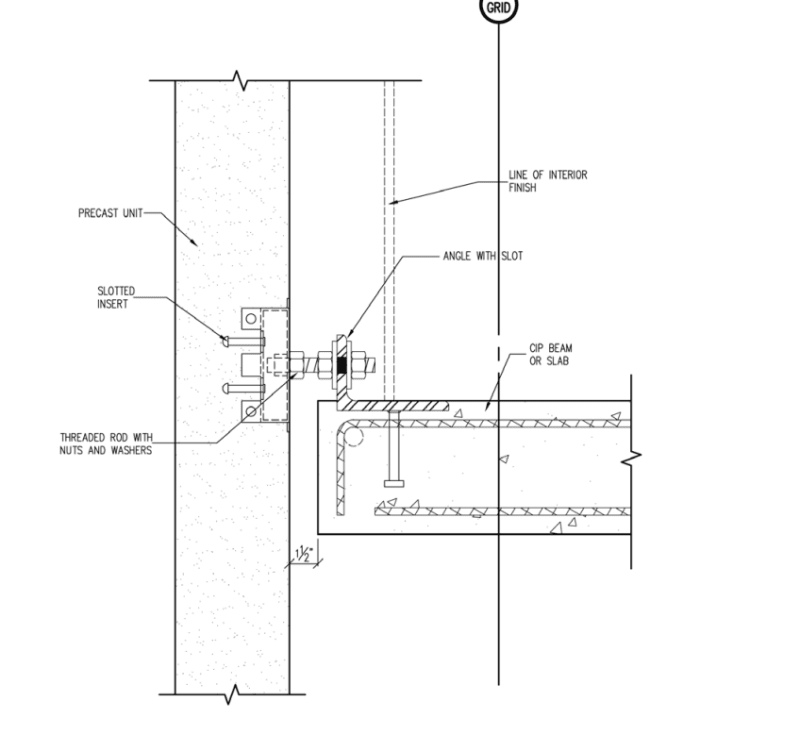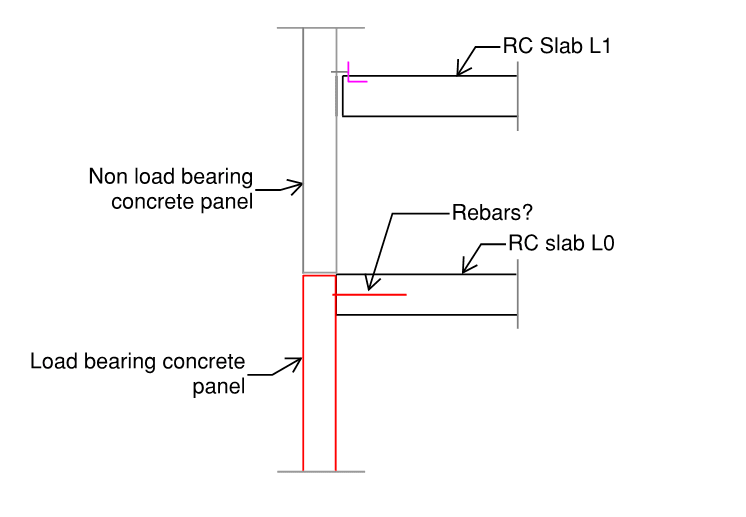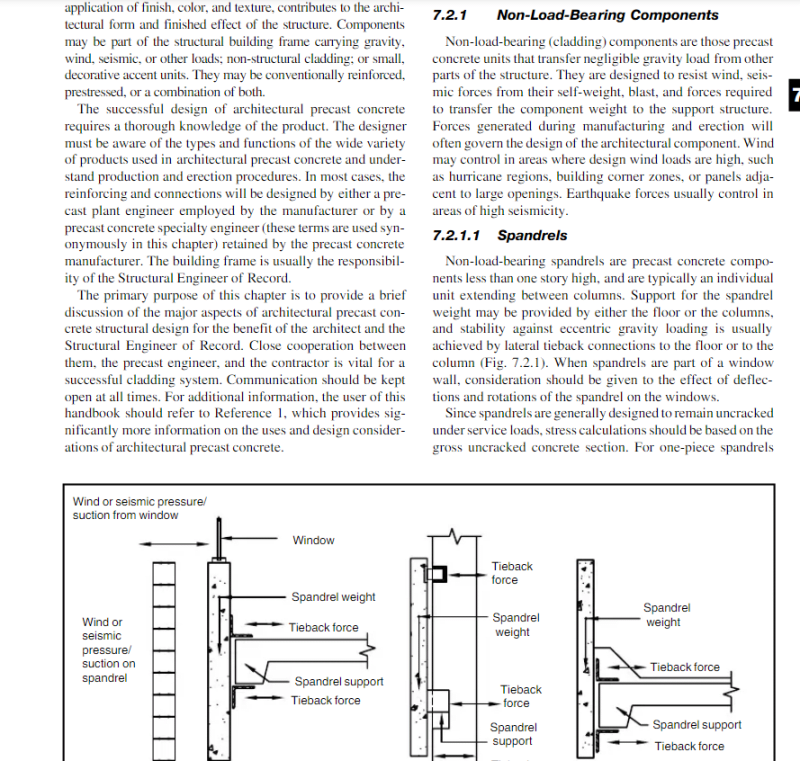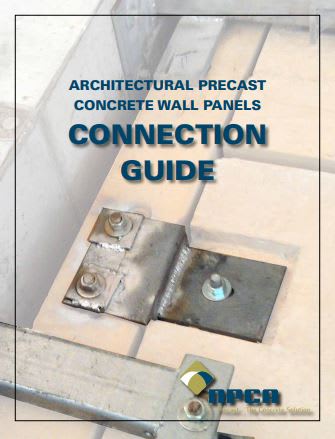Hi fellows,
I am looking for some advices on the connection between RC slab and non-load bearing precast concrete panel that 'hangs' on the facade. I think of the using the rebars or the like as below but I believe that the panel become load bearing with connection like this. i.e. panel will brings the loads from slab L2 to slab L1, which is not my intention. Any thoughts or advice?
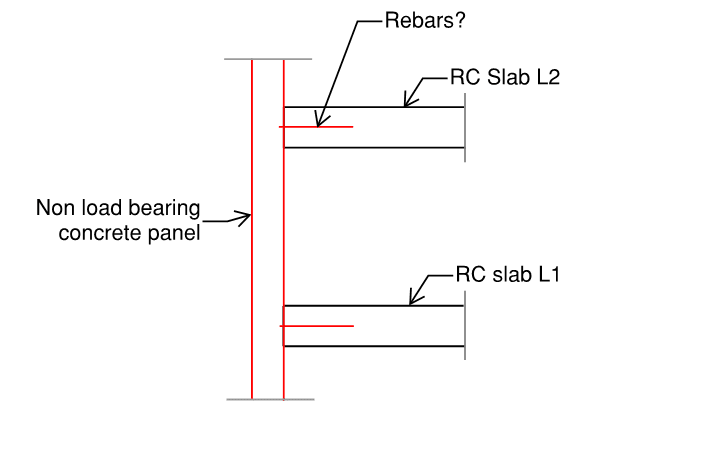
I am looking for some advices on the connection between RC slab and non-load bearing precast concrete panel that 'hangs' on the facade. I think of the using the rebars or the like as below but I believe that the panel become load bearing with connection like this. i.e. panel will brings the loads from slab L2 to slab L1, which is not my intention. Any thoughts or advice?


